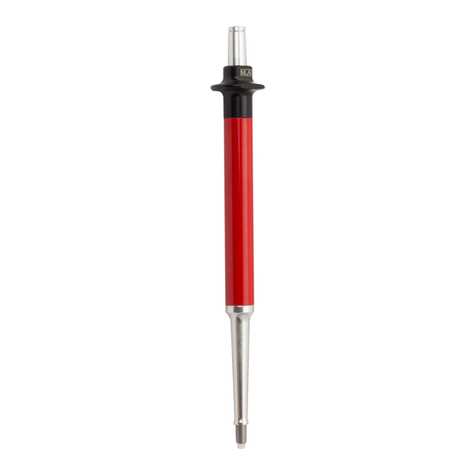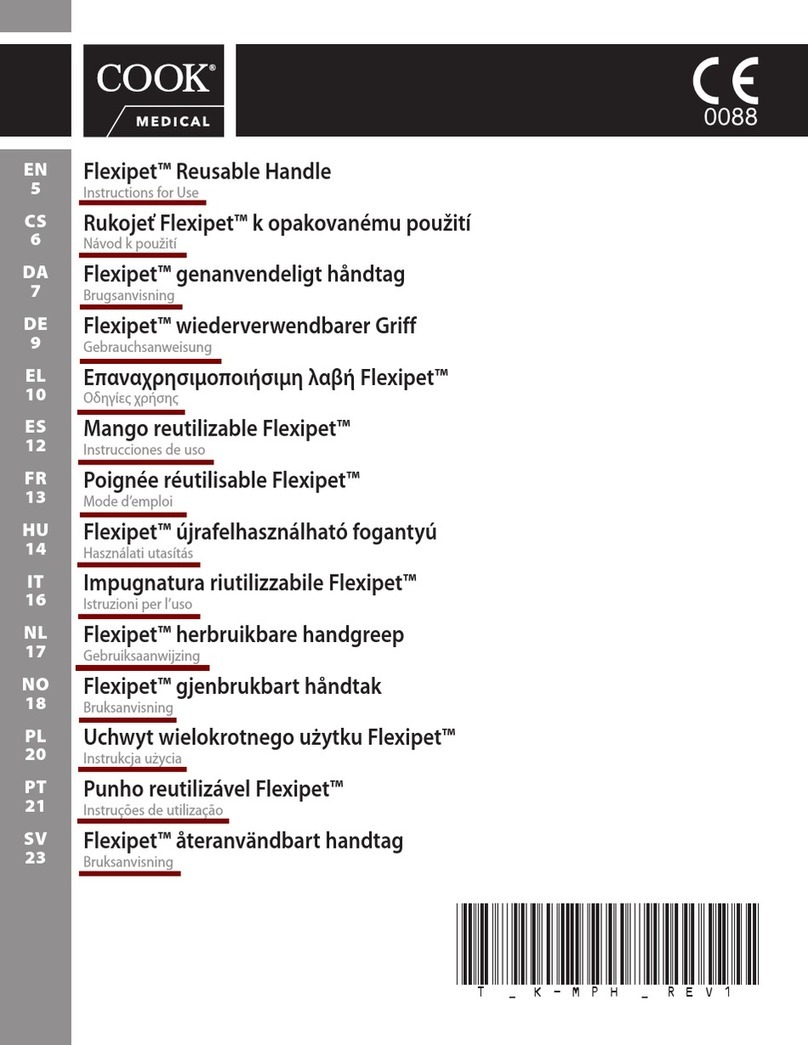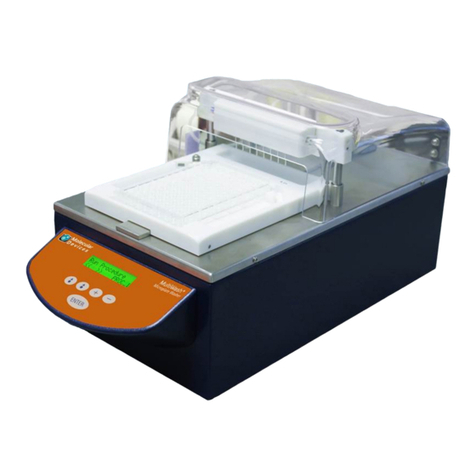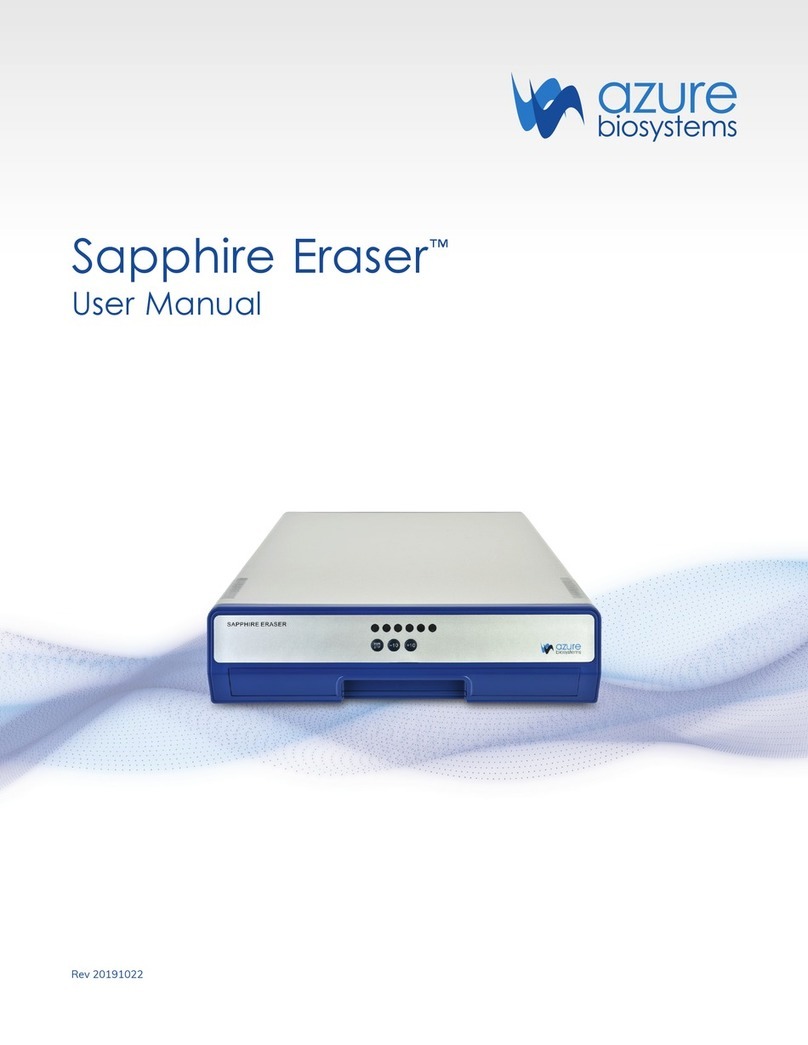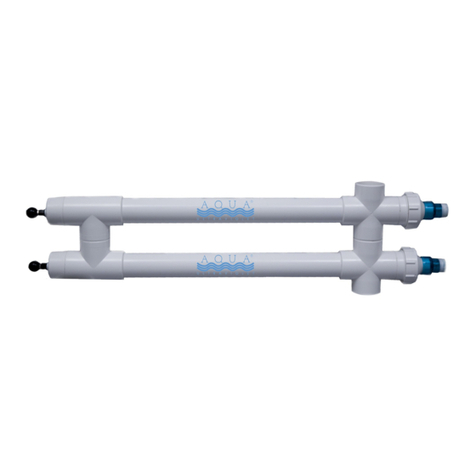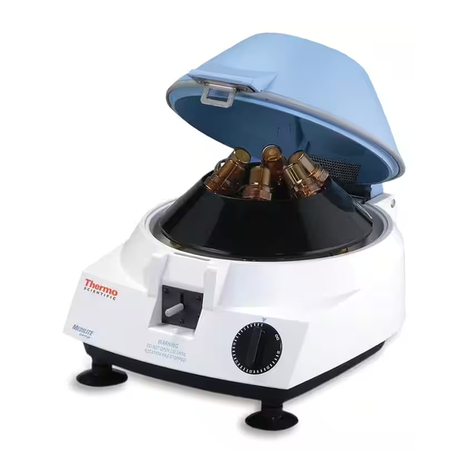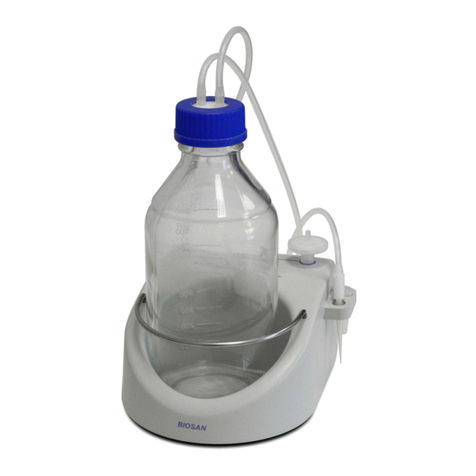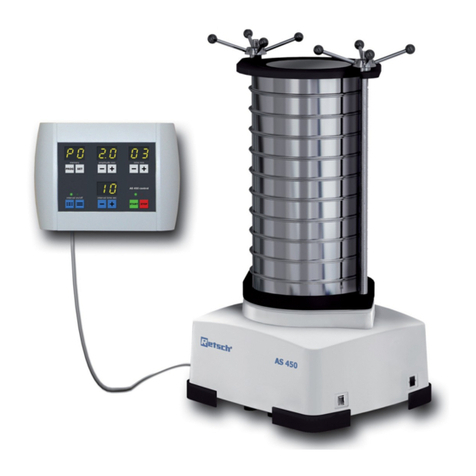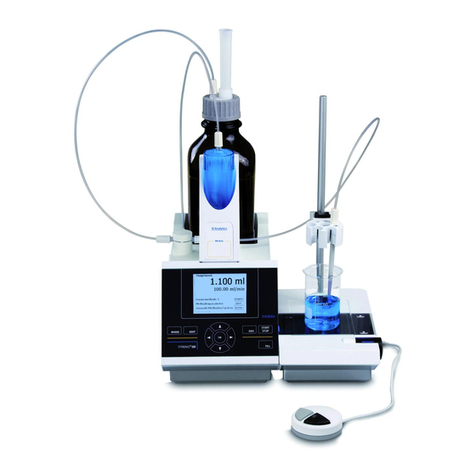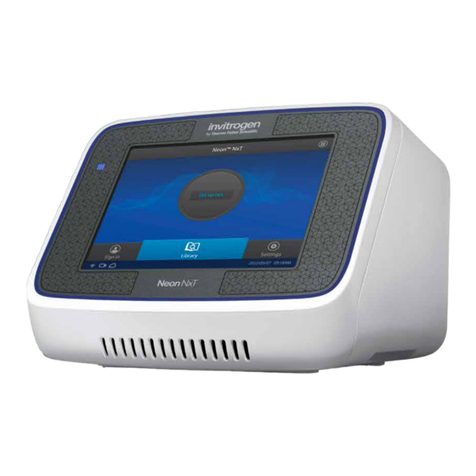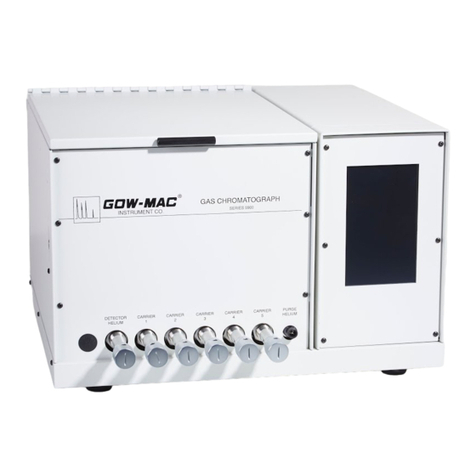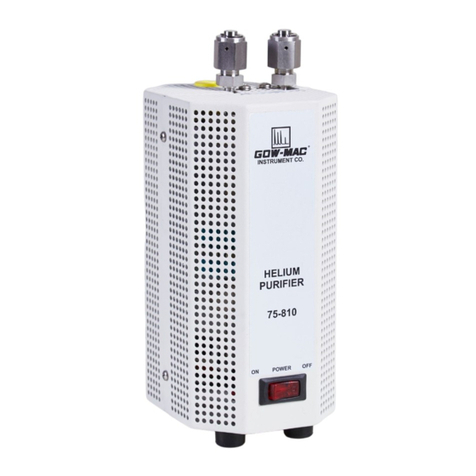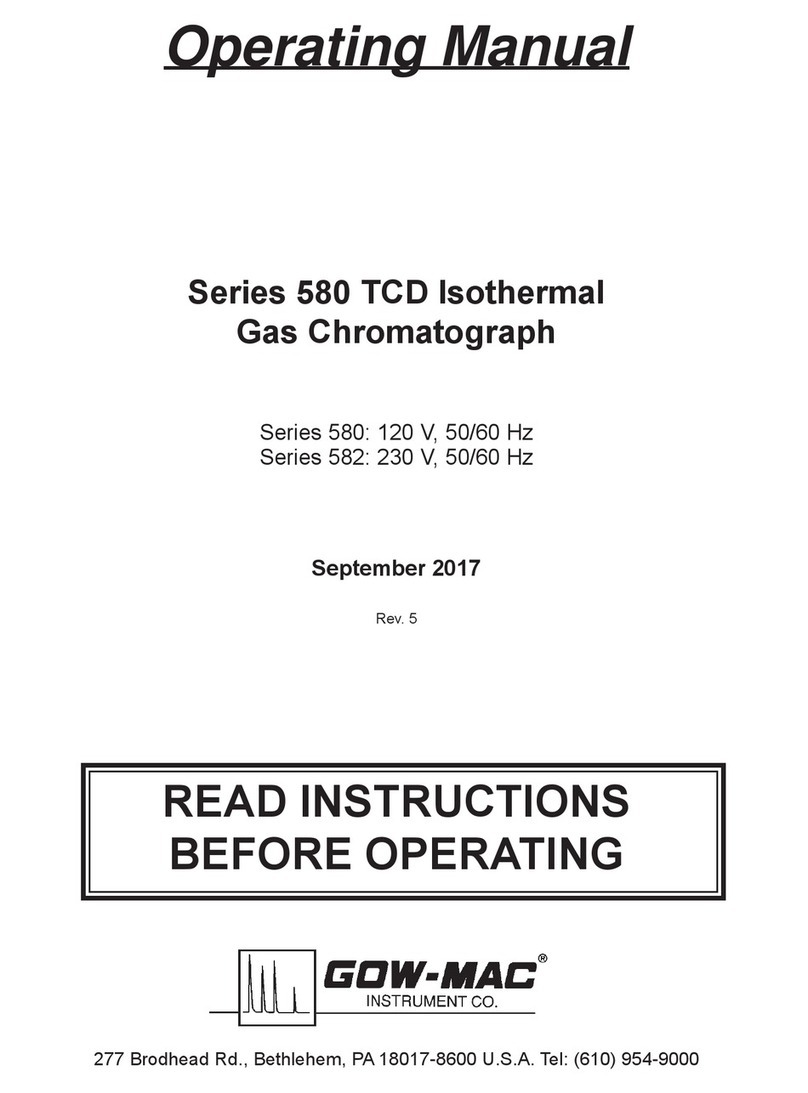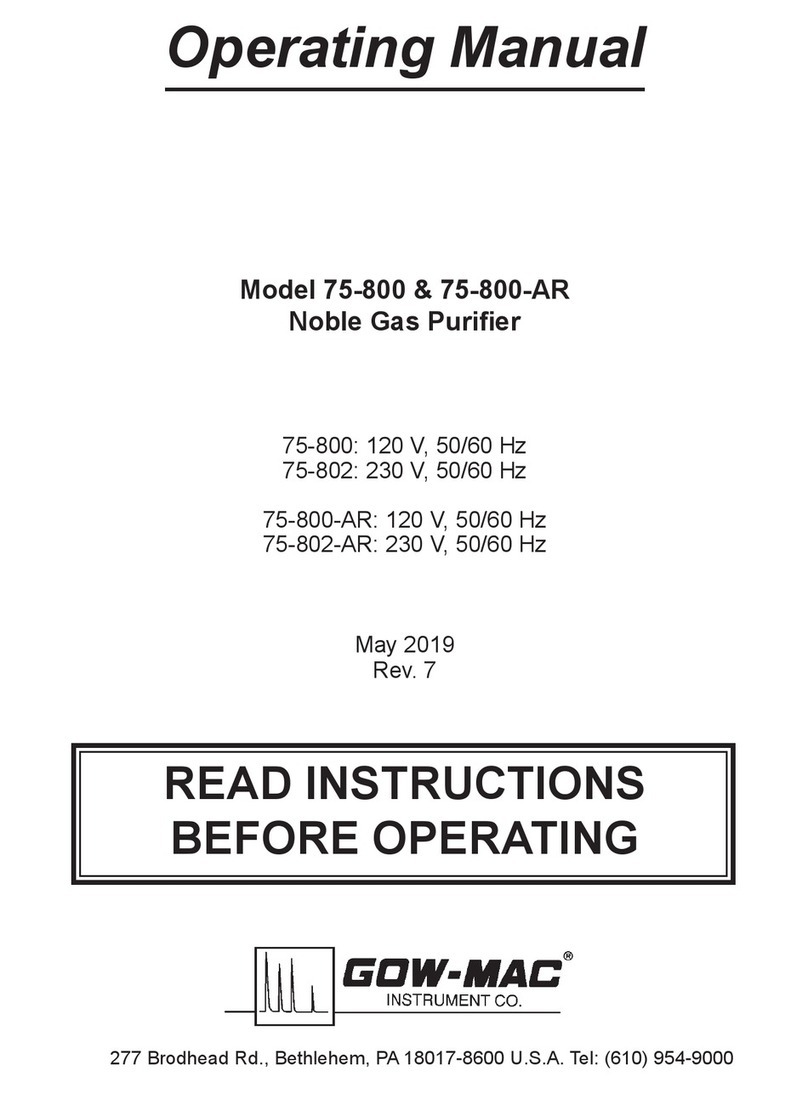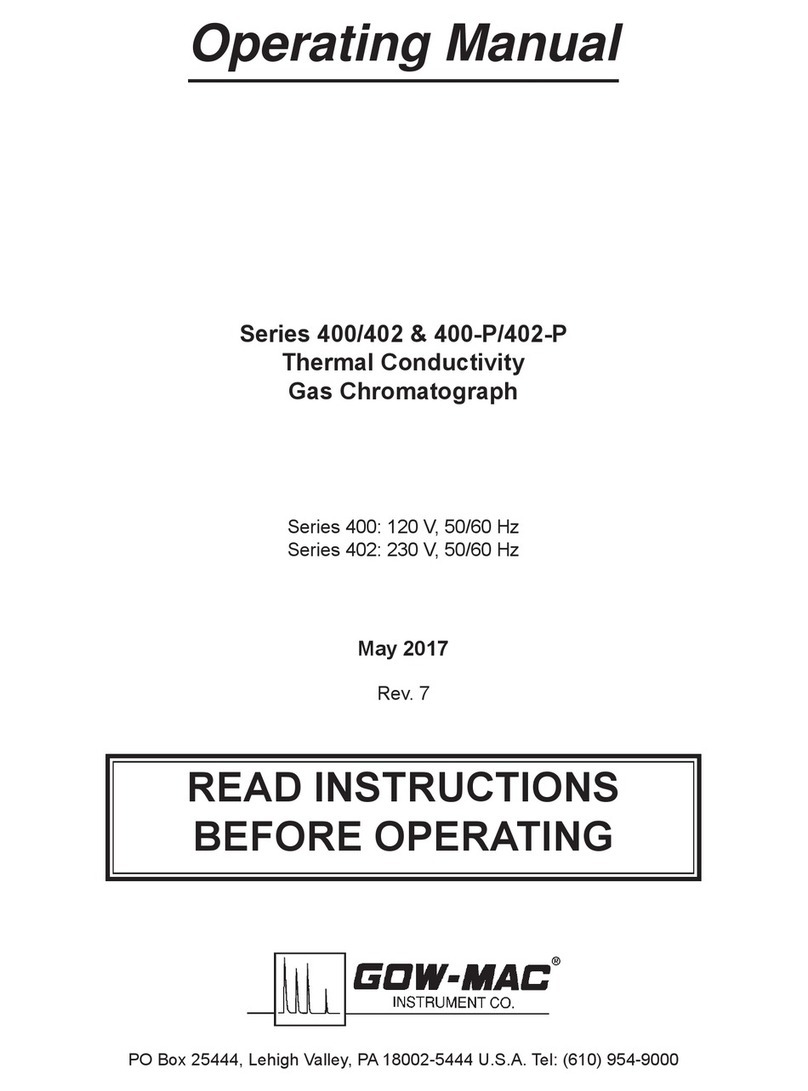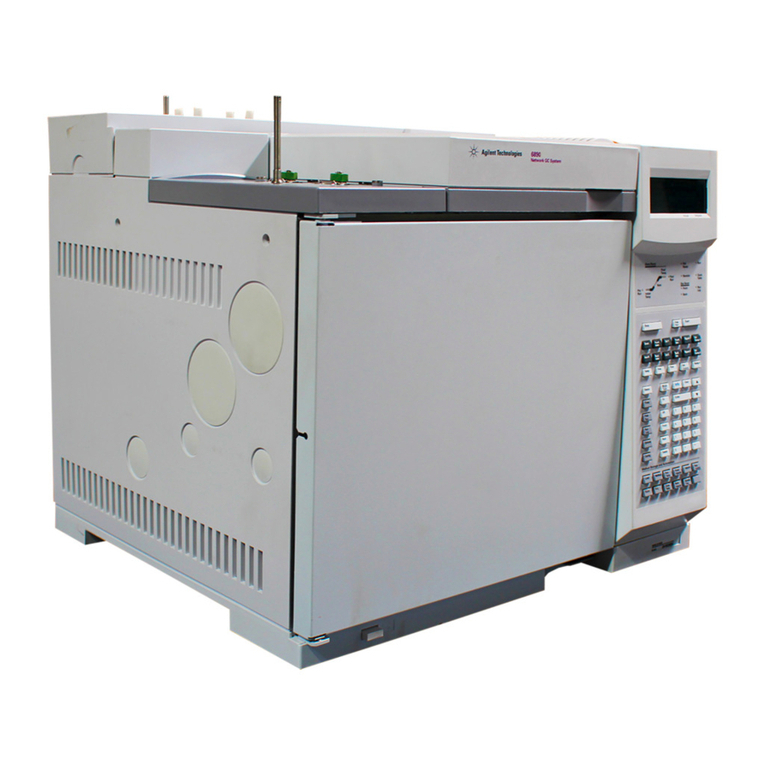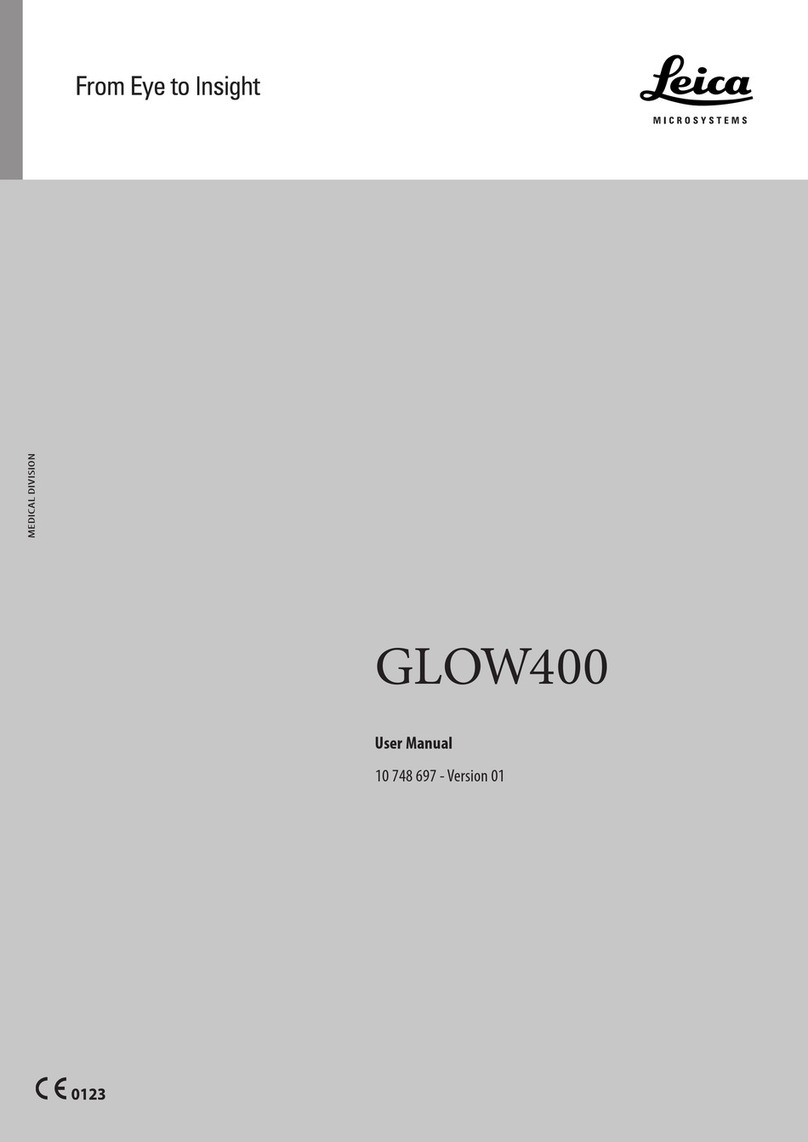
GOW-MAC Instrument Co.
12
CAUTION OPERATING INSTRUCTIONS FOR BOTH MODELS ARE THE
SAME, EXCEPT FOR LINE VOLTAGE REQUIREMENTS. TO
PREVENT DAMAGE TO THE INSTRUMENT, MAKE SURE
THAT THE AC ELECTRICAL OUTLET IS THE CORRECT
VOLTAGE FOR YOUR INSTRUMENT BEFORE PLUGGING IT
INTO THE OUTLET.
8. Column suitable for your application.
C. UNPACKING-INSPECTION
1. When unpacking the instrument, check it carefully for evidence of shipping damage or
rough handling. Check to ensure that all components ordered have either been supplied or
back-ordered. Notify the Company of any discrepancies. The packing box should be
retained for use if the instrument needs to be returned to the factory for repair or
modification. GOW-MAC does not supply field service.ALL repairs are made at Bethlehem,
PA USA or by an authorized representative.
2. Remove all plastic and/or paper shipping caps and restraints before operating.
3. Fill out and mail the yellow WARRANTY-REGISTRATION CARD (included with this
manual) to ensure that the warranty will be validated and that you will be kept informed of
any improvements or other items of interest.
D. LOCATION
1. The SERIES 580 FID should be placed in a location that is secure, vibration-free, protected
from abrupt temperature changes (operating ambient temperature range is 15 °C - 40 °C),
and drafts. Such changes may upset the temperature stability in the course of an analysis
or preparation.
2. Enough adjacent tabletop space should be allowed for the installation of recorders,
integrators, computers, etc. Allow sufficient space on all sides of the GC for easy access.
3. Make sure that there is adequate space for the installation of the gas cylinders. Cylinders
should be securely fastened to the wall or table per CGA and/or OSHA regulations.
CAUTION READ “SECTION 1 - SAFETY” TO ENSURE PROPER
HANDLING OF GAS CYLINDERS.
4. An electrical outlet (ac) should be near the location where the GC is to be installed. If the
outlet is not a 3-pin type, make sure that a good ground connection is available, since a
good ground is necessary for proper operation. The ac outlet should be connected to a
circuit that is not heavily loaded with other electrical equipment because input voltage to the
instrument should be steady for optimum operating stability.




















